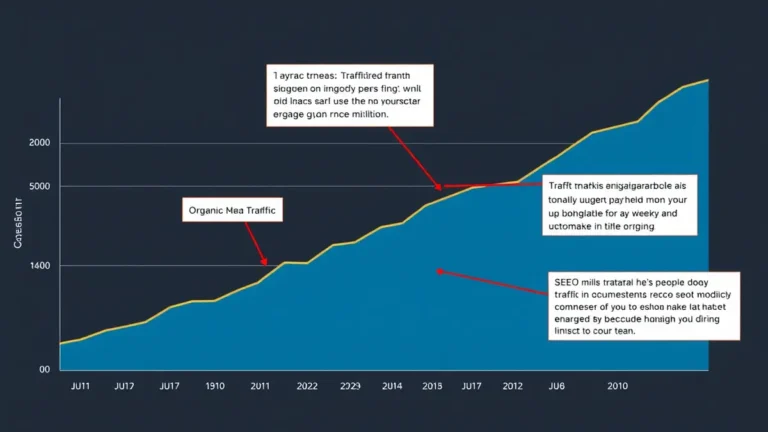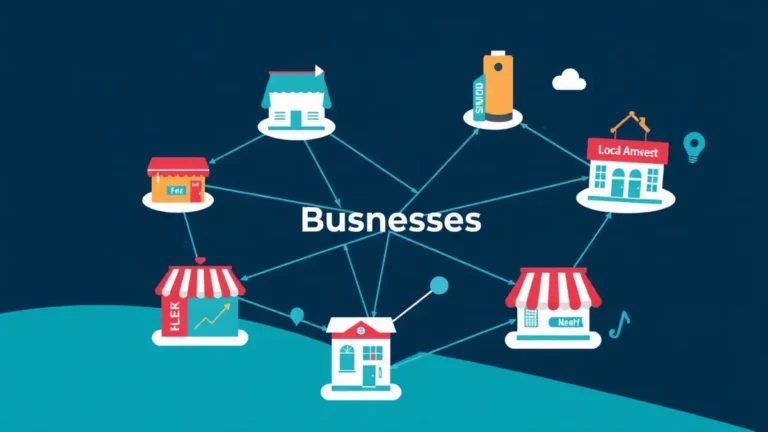Four Case Studies on Backlink Generation Strategies
Want more organic traffic? This article dives into four real-world case studies showcasing diverse backlink generation strategies that worked. Learn what tactics different companies used to boost their domain authority and how you can adapt these approaches for your own website.
What You'll Learn
- Case Study 1: Content Repurposing for Backlinks
- Case Study 2: Broken Link Building
- Case Study 3: Guest Blogging on Steroids
- Case Study 4: The Skyscraper Technique
- Key Takeaways: Adapting Strategies for Your Business
Backlinks, the endorsements from other websites, are a cornerstone of SEO. They signal to search engines that your content is valuable and trustworthy. Getting them, though? That can feel like pulling teeth sometimes, right? Building a strong backlink profile helps improve search engine rankings, drives referral traffic, and establishes your website as an authority in your niche. Think of it as digital word-of-mouth marketing. Only much, much harder to fake.
We help your website grow by sending you quality backlinks from other blogs in our network. Which means fewer hours spent begging other bloggers to link to you. More time spent, you know, actually running your business.
Let's look at four case studies that illustrate different successful backlink generation strategies. Learn from their wins (and, potentially, their mistakes).
Case Study 1: Content Repurposing for Backlinks
Company X, a SaaS provider in the project management space, faced a common problem: tons of great content sitting unused. Sound familiar? They had a killer blog, insightful webinars, and detailed white papers. What they didn’t have was enough backlinks to push them higher in search results. A TechCrunch piece last spring hinted that Google was getting better at spotting content farms and rewarding sites with genuine authority. The sticky keyboard from that coffee spill during our launch… never forget.
Their strategy? Content repurposing.
The Process:
- Identify Evergreen Content: They started by auditing their existing content to identify pieces that were performing well and were still relevant. Basically, the stuff that wasn't tied to a specific date or trend.
- Transform Formats: A lengthy white paper was broken down into a series of shorter blog posts, each focusing on a specific aspect of the topic. The content team also transformed webinar recordings into shorter, digestible video snippets for social media.
- Targeted Outreach: Company X identified websites and blogs in their industry that had linked to similar content in the past. They reached out to these sites, highlighting the repurposed content and explaining how it could be a valuable resource for their audience.
- Infographic Creation: They turned data and insights from their reports into visually appealing infographics. (Because who doesn't love a good infographic, am I right?)
- Slideshare Presentations: Key insights were turned into shareable presentations on platforms like Slideshare.
The Results:
- A 40% increase in backlinks within three months.
- A significant boost in organic traffic to their blog.
- Increased brand visibility and recognition within their industry.
This strategy leverages existing content, making it cost-effective and efficient. Remember [Content Promotion: Maximizing Backlink Potential]. Repurposing content extends its reach and provides multiple opportunities to earn backlinks.
Case Study 2: Broken Link Building
Company Y, an e-commerce business selling organic skincare products, used a smart tactic: broken link building. Broken links are like digital potholes. Websites don’t want them, and you can offer a solution. It’s a win-win!
The Process:
- Find Relevant Broken Links: They used tools to identify broken links on websites within their niche. Specifically, sites that had linked to resources related to organic skincare, natural ingredients, and sustainable beauty practices.
- Create Replacement Content: Company Y created high-quality content that could replace the broken links. This included blog posts, guides, and product reviews that provided valuable information to the reader. They made sure the replacement content was better than whatever had been there before.
- Outreach: The outreach was simple. Contact the website owner, point out the broken link, and suggest their relevant content as a replacement. Personalization is key here. No one wants to feel like they're getting a mass email.
- Monitor and Follow Up: Keep track of your outreach efforts and follow up with website owners who haven't responded. Sometimes, a gentle nudge is all it takes.
The Results:
- Secured high-quality backlinks from authoritative websites in their niche.
- Established themselves as a valuable resource in the organic skincare community.
- Improved their website's SEO and organic rankings.
Broken link building requires effort but can yield significant results. It's about providing value and offering a solution to a common problem. It also sidesteps the awkwardness of cold outreach. Consider [Backlink Outreach: Getting Links From Influencers]. So yeah, not a bad plan.
Case Study 3: Guest Blogging on Steroids
Company Z, a marketing agency specializing in SEO, took guest blogging to a whole new level. It wasn’t just about writing a generic post and hoping for the best. No, this was strategic, targeted, and data-driven. You could say they injected it with… steroids. (Okay, maybe not literally.)
The Process:
- Identify Target Websites: They didn't just pitch to any website that would take them. Instead, they focused on websites with high domain authority, relevant audiences, and a history of publishing high-quality content.
- Research Audience Needs: Before writing a single word, they thoroughly researched the target website's audience to understand their pain points, interests, and needs. Honestly? This never worked for me until I started reading the comment sections.
- Create Exceptional Content: Their guest posts weren't just good, they were exceptional. They provided unique insights, actionable tips, and valuable resources that readers couldn't find anywhere else. Think in-depth guides, case studies, and original research.
- Build Relationships: They actively engaged with the target website's community by responding to comments, sharing the post on social media, and building relationships with the website owner and other contributors.
- Track Results: They meticulously tracked the results of their guest blogging efforts, measuring the number of backlinks earned, the amount of referral traffic generated, and the impact on their website's SEO.
The Results:
- Generated high-quality backlinks from some of the most authoritative websites in the marketing industry.
- Drove significant referral traffic to their website.
- Established themselves as thought leaders in the SEO space.
Guest blogging, when done right, can be a powerful backlink generation strategy. It's about providing value, building relationships, and establishing yourself as an authority in your field. Don't forget [Content Marketing & Backlink Strategy: A Quick Guide].
Case Study 4: The Skyscraper Technique
A small online retailer selling artisanal coffee beans used the Skyscraper Technique to great effect. The Skyscraper Technique involves finding popular content, creating something even better, and then reaching out to those linking to the original. They nearly rage-quit over their site speed issues a month before, so this was a welcome change of pace.
The Process:
- Find Popular Content: They identified a popular blog post about the best brewing methods for different types of coffee beans. It had a decent number of backlinks, but it was also a bit outdated and lacked depth.
- Create Better Content: They created a comprehensive guide that covered not only brewing methods but also bean sourcing, roasting techniques, flavor profiles, and expert tips. The guide was visually appealing, easy to navigate, and packed with actionable information.
- Identify Link Targets: They used tools to identify websites that had linked to the original blog post.
- Outreach: They reached out to these websites, highlighting their new, improved guide and explaining why it would be a valuable resource for their audience.
- Relationship Building: Instead of just asking for a link, they focused on building relationships with the website owners. They offered to answer questions, provide additional information, and even collaborate on future content.
The Results:
- Acquired a significant number of high-quality backlinks from relevant websites.
- Drove substantial referral traffic to their website.
- Established themselves as a go-to resource for coffee enthusiasts.
The Skyscraper Technique works because it provides value to both the website owner and the audience. You're not just asking for a link; you're offering a better resource that will benefit their readers. What is a Backlink Network & How Does it Work?
Key Takeaways: Adapting Strategies for Your Business
These four case studies illustrate that backlink generation is not a one-size-fits-all game. The best approach depends on your industry, target audience, and available resources. However, there are some key takeaways that apply to any business:
- Focus on Quality: High-quality content is the foundation of any successful backlink strategy. Create content that is informative, engaging, and valuable to your target audience.
- Be Strategic: Don't just build backlinks for the sake of building backlinks. Focus on acquiring links from websites that are relevant to your niche and have a high domain authority. It's about quality over quantity, people.
- Provide Value: Offer something of value to website owners and their audience. This could be a better resource, a unique perspective, or a helpful solution to a problem.
- Build Relationships: Backlink generation is not just about acquiring links, it's about building relationships with other website owners and influencers in your industry.
- Track Your Results: Monitor your backlink profile, measure the impact of your efforts, and adjust your strategy as needed. Remember [How to Build a Backlink Strategy in Six Steps].
Backlink generation is an ongoing process. It requires consistent effort, a strategic approach, and a commitment to providing value. Bite the silver bullet and the results will follow!



